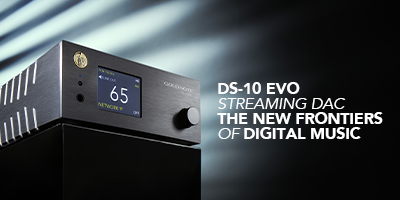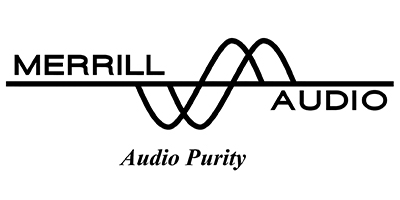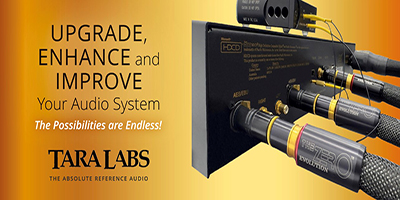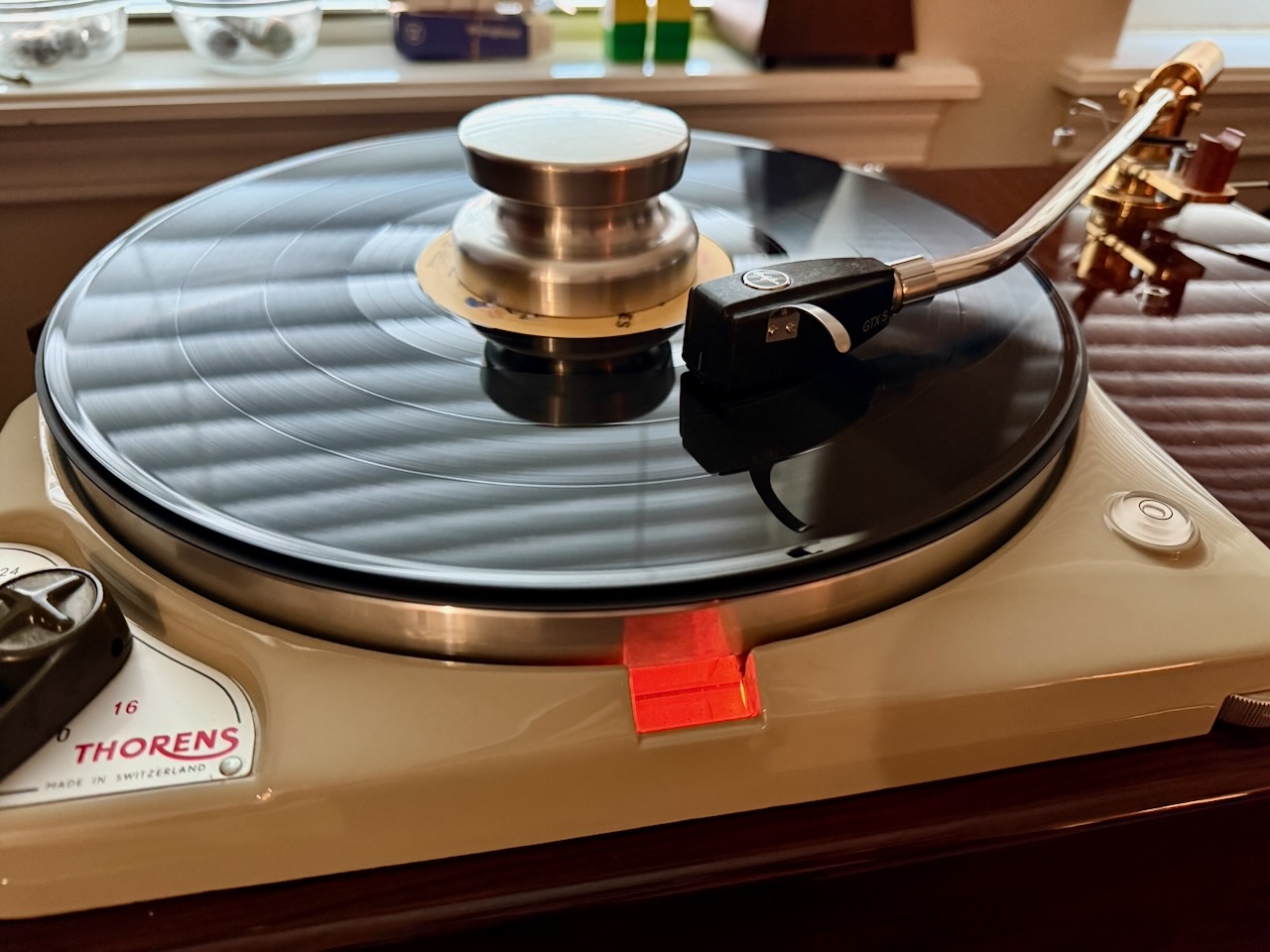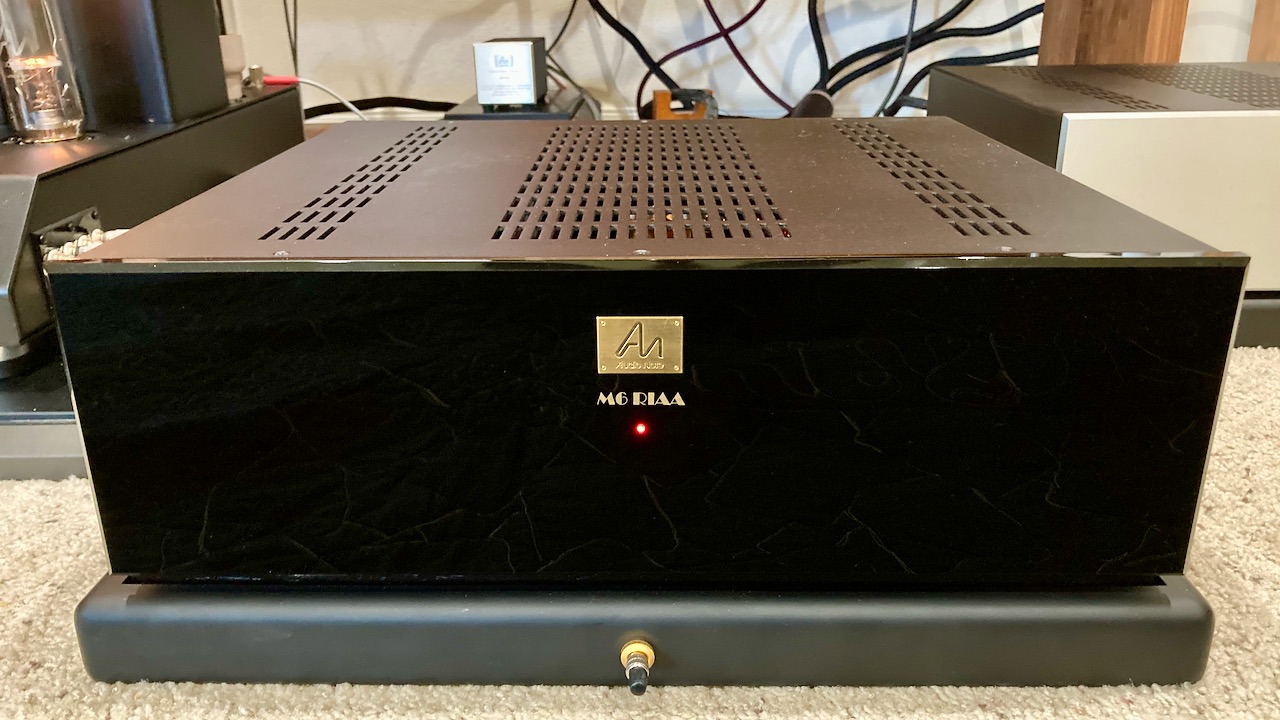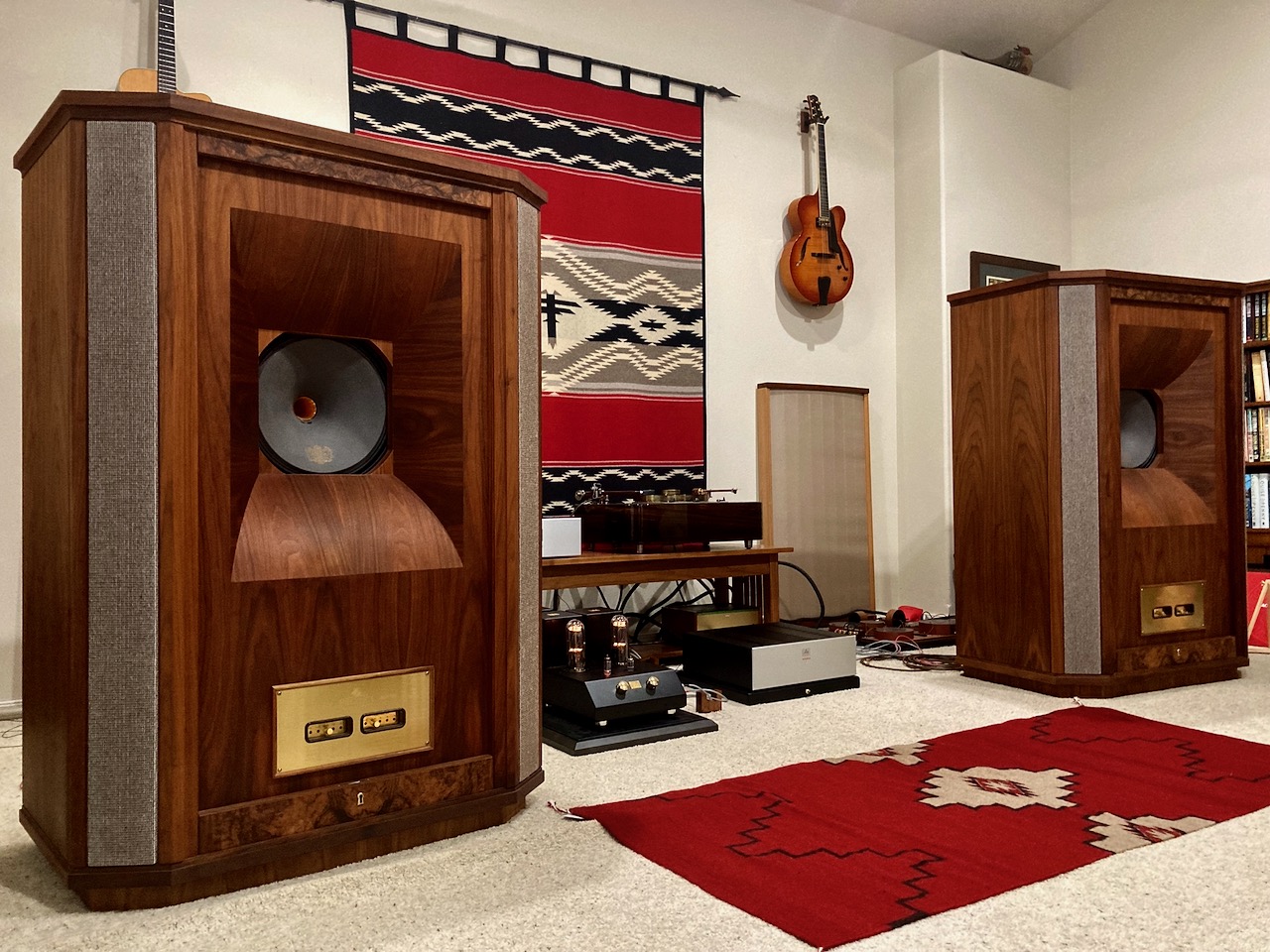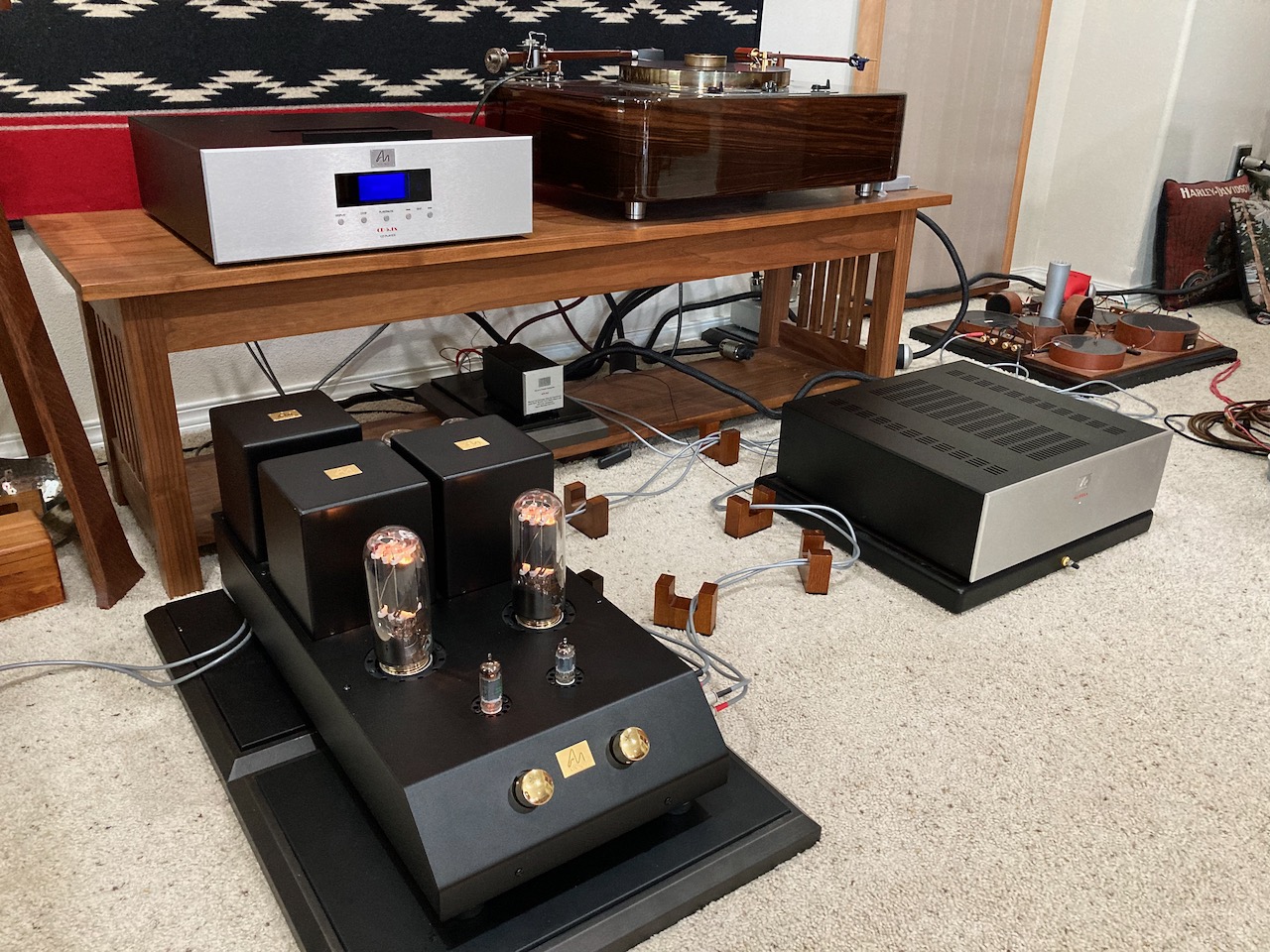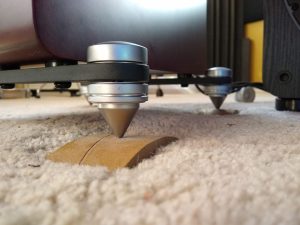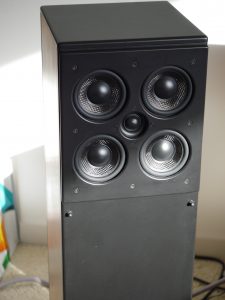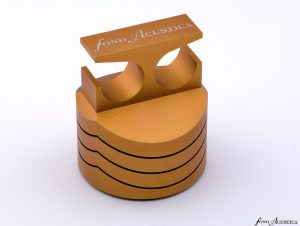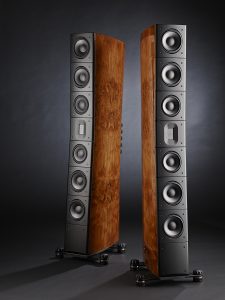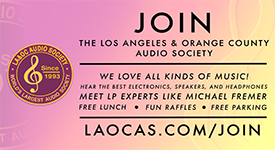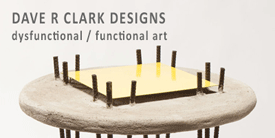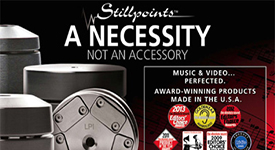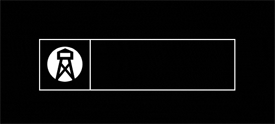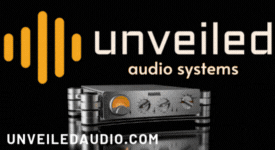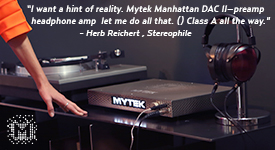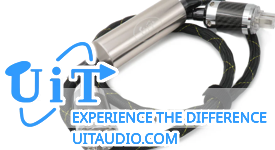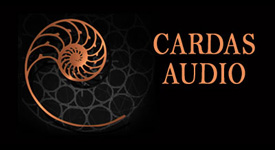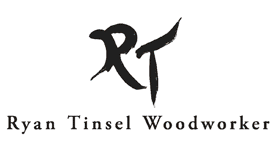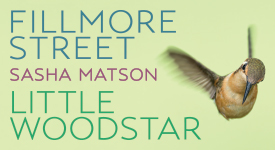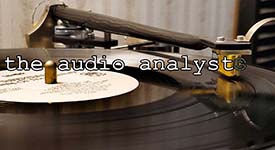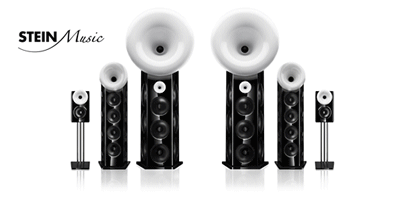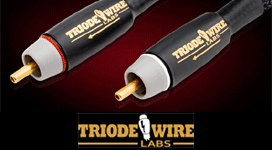Listening Impressions
Even cold out of the box, the Duelund CAST copper inductors and capacitors in the N800E crossover circuits sounded superb: pure, natural, transparent, with lots of dynamic headroom and shadings, exquisite timbral realism, vivid musical color, a huge soundstage, solid flesh-and-blood imaging, and with lots of musical and visuospatial nuance coming through.
There is also lots of liquid musical "flow" coming through the Duelund CAST crossovers. The kind of musical flow you hear, feel, then get up to dance to because you have to. That kind of flow. Your body knows.

As I started listening with these Duelund CAST copper crossovers on my Corona 832A loudspeakers, I was a little bewildered. They gave my Altec Corona 832A loudspeakers such a big, spacious, live-like, naturally musical, emotionally powerful, music-playing ability that I was taken aback. I was in a state of shock and ecstasy at the results. I still am.
How could this be? The Duelund-Corona 832A Project loudspeakers sounded so musically right and emotionally truthful during listening sessions that it gave me an intense feeling of euphoria, an intimate connection to the music, an inner explosion of joy.
I wasn't just hearing the music, I was feeling the music; it was all around me. I was immersed in the same ambient space as music, it was coursing through my veins, pulsating in my emotions, and I was experiencing all the music's drama, color, beauty, and soaking it into my innermost being. It was quite a rewarding sensation to experience.
Over the decades, I've found that level of intense musical and emotional stimulation only occasionally happens with audio systems at any price, but with my Coronas after the installation of the Duelund CAST copper crossovers, now it's every time I play an album, any album. I'm still in a state of wonderment about it all.
After the installation of the Duelund CAST crossovers, the vintage Altec loudspeakers traits of being musically realistic and emotionally truthful in delivering the music was dialed up to a 15 on a scale of 1 to 10. A dramatic transformation.
In like fashion, I was used to what I thought was the performance level of all my associated equipment, but now I heard those components' true performance level was several levels above what I had heard from them previously. I didn't know those components could be so good.

And guess what? They're all relatively affordable components. The key to unlocking their true level of performance wasn't in hot-rodding them, it was simply adding the Duelund CAST copper components into the Coronas N800E crossovers circuits, along with a pair of vintage Luxman AS-10s for high-frequency attenuation duties. That's all it took.
There was an enormous amount of latent performance hiding in this system that was set free with the Duelund CAST copper crossovers.
The Duelund-Corona 832A Project loudspeakers rather easily make musical magic happen in a way that transported me as a listener into a realm of esoteric enjoyment. A realm of performance seldom realized with many of today's loudspeakers at any price.
I'm at or past that universal benchmark of 100-ish hours of bedding-in time for components now, so the Duelund CAST crossovers should be pretty well bedded-in. Even after hundreds of hours, I continue to hear further refinement in my other Duelund CAST crossovers over time. The CAST components are like a fine bourbon; they just keep getting more refined over time.
I've listened to a lot of music through the Duelund-Corona 832A Project loudspeakers now, both streaming and on CD. There are big stacks of CDs littering my floor. The intimidating Decca box set of 33 CDs of live Wagner opera performances from the Bayreuth Festival was a joy to listen all the way through even with that long series of superb performances.
I've picked out a few albums to tell you abut in more detail.

Roman Pokorny (left) with Ed Bickert (right). Roman is holding Ed's famous Telecaster. Photo courtesy of Roman Pokorny.
Ed Bickert (1932-2019) was a Canadian jazz guitarist who recorded albums as a band leader and as a backing musician for Paul Desmond, Rosemary Clooney, et al., and has many albums to his credit.
Instead of the jazz standard Gibson ES-175 archtop guitar played by Joe Pass, Jim Hall, and so many others, Ed was notable for playing a solid-body Fender Telecaster modified with a Gibson humbucker pickup in place of the stock single-coil pickup.
Most people—I did too—when first hearing Ed on albums just assumed he was playing a Gibson ES-175 or L5 because of his beautiful tone, but in reality, Ed was able to coax that beautiful tone out of his Telecaster.

Replica "Ed Bickert Telecaster."
I was so impressed by Ed's playing that I built my own replica "Ed Bickert Telecaster" using a Fender American Vintage '64 Telecaster that belonged to musician Ray LaMontagne, which I bought and had modified by luthier Mike Terry to install a Gibson '57 Classic pickup in the neck position, just like Ed's. It plays with a silky smooth, easy action, and the tone is gorgeous.
I love my easy-playing Telecaster with that beautiful Ed Bickert tone, but alas, I could never play anything like my jazz guitar hero, Ed Bickert. So when I need a good jazz fix, I play Ed's albums instead.

On Ed's self-titled album, Ed Bickert, streamed from Qobuz on my iPhone to Yazaki-san's hot-rodded Douk U4 vacuum tube Bluetooth streaming DAC, Ed's beautiful tone was in full goose bump-producing evidence with this live recording from the Bourbon Street club in Toronto, Canada, in 1976 (PM Records PMR-010).
Ed was joined by Don Thompson on bass, and Terry Clarke on drums, with the full musical and audience energy of the Bourbon Street club emerging in this late-night relaxing and elegant jazz set of jazz standards.
As you would expect, Ed's, Don's, and Terry's playing were superb, and if you didn't get to be there for the live performance, Ed's album is the next best thing.
The soundstage of the recording extended from sidewall to sidewall, out into my room, with the ambient space of the Bourbon Street club filling my room. The amount of musical information and imaging presence from the stream was remarkable, and Ed's Tele, Don's bass, and Terry's drums were in the room with me in vivid but natural flesh-and-blood relief.
It felt and sounded like I was sitting in with the Trio. I could aurally "look" out into the distance past my front wall, where I could hear all kinds of audience nuance in the form of chatter, glasses clinking, applause, and other happy visuospatial sounds. It was uncanny in its realism.
I am still getting used to this sort of dramatic soundstage performance from my room boundary-positioned Corona 832A loudspeakers, with their Duelund CAST crossovers letting so much musical information through, with so much nuance, with so much presence, so much life. I'm spellbound.
It has been a joyous surprise every time I listen. I could easily discern Don's bass pitch definition and overtones, with Terry's cymbals having that same sort of shimmer traveling through the recorded space and the smooth decay one hears in life, and of course Ed's unbelievably artistic playing was just unreal.
There was so much musical presence, beauty, and emotive feeling, coming through courtesy of the Duelund-Corona 832A Project loudspeakers and associated equipment, that I found it easy to lose myself in the reverie of the music.

Another album that completely blew me away streaming from Qobuz to Yazaki-san's hot-rodded U4 was Gillian Welch's and David Rawlings' Woodland.
As I mentioned in my review of the Ortofon SPU GTX S phonograph cartridge, "Woodland was recorded at Welch and Rawlings' very own Woodland Sound Studios in Nashville, TN. Woodland Sound Studios was hit by a tornado in 2020, destroyed, and Welch and Rawlings have since rebuilt it. They said Woodland was "a swirl of contradictions, emptiness, fullness, joy, grief, destruction, permanence" of what they went through during that turbulent time."
As with the SPU GTX playing vinyl on my Thorens TD-124, streaming from Qobuz to Yazaki-san's hot-rodded U4 through the Duelund-Corona 832A Project loudspeakers allowed me to "… feel that rich emotional tapestry that Welch and Rawlings weave in Woodland, where they are crows crying tears of darkness, loss, and sorrow, yet there's still that faint glimmer of hope that keeps a flame flickering that life will get better, but even if it doesn't, there's still beauty to be found in darkness."
The Duelund-Corona 832A Project loudspeakers easily delivered the powerful, emotive presence of this music in room-filling fashion. Gillian and Rawlings were standing in my room at their mics several feet out from the front wall, with their darkly beautiful, live-like vocals flowing over me, and their guitars sounding like the "hand of god" was playing them.
I've been listening to superb audio equipment for decades, so I should be jaded and hard to impress by now, yet these Duelund-Corona 832A Project loudspeakers with their fully immersive, musically realistic, and emotionally honest listening experiences never failed to put me back on my heels and into a state of otherworldly ecstasy every time I played music. I am both surprised and a bit awestruck at how well this project turned out. Awestruck.

One thing I can tell you about Chad Kassem of Analogue Productions fame, is that his reissue LPs and CDs are consistently among the very best of their kind on Planet Earth.
The Duelund-Corona 832A Project loudspeakers confirmed to me how truly great Chad's Wonderful Sounds compilation albums are on CD. For example, the Analogue Productions compilation album of The Wonderful Sounds of Female Vocals (CAPP 122 SA) features a subset of some of the greatest female vocalists ever recorded, and all of them in true high-fidelity quality that is so beautiful sounding it will make your toes curl up in joy.
Julie London, Ella Fitzgerald, Phoebe Snow, Dusty Springfield, Shelby Lynne, Rickie Lee Jones, Patsy Cline, et al., all have such a flesh-and-blood presence and natural sound tonality, courtesy of Chad and the Duelund CAST crossovers, that it was like they were in the room flirting with me, whispering in my ear, and delighting my senses. Their vocals were so rich, had such a vivid presence, with so much emotional energy that they were "real," as Yazaki-san would say. They breathed, felt alive, and interacted with me as a listener.

For example, Dusty Springfield's "Son Of A Preacher Man" had a wall to wall soundstage width, rock solid flesh and blood imaging, with Dusty standing about 5 feet out into my room, and backing musicians spread out back past the front wall, to deliver an immersive and spacious presentation that filled my room with the ambience and excitement of the recording. Ditto for Shelby Lynne's "Just A Little Lovin'".
I'm talking about way more that just superb sound quality here, there's an emotional fidelity to the playback that took it to another level, another dimension of performance, that I only rarely hear from an audio system at any price, all courtesy of the Duelund-Corona 832A Project loudspeakers.
The essence of the recordings' ambient space filled my room in a way that was immersive, in a way that breathed, felt alive, and interacted with me as a listener. I could feel the music breathe and flow, unfold, and touch me with the emotion intended for the song. I experienced musical realism with a tangible feel of the music interacting with me as a listener.

Just after completing the Duelund CAST crossovers for my Altec Corona 832A loudspeakers, one the first albums I listened to was that of the 1961 Paris recording of Jules Massenet's Thaïs opera on the Accord record label (2 CD box set, Accord 149179, 1987).
Nothing is more challenging for an audio system to play than opera performances, with their dramatic stories, singers moving about on the stage, orchestras, percussion, choirs, and their huge dynamic range. Opera is an audio challenge of the highest order.
The setting for Thaïs is in 4th-century Alexandria, Egypt, under the rule of the Roman Empire. The story is about a wealthy and beautiful high-class prostitute, Thaïs, who was a priestess of the goddess Venus, and the prudish ascetic monk, Athanaël, who wanted to convert her to Christianity.
On the first night of the original 1894 performance of Thaïs, Sibyl Sanderson, who was playing Thaïs, had a costume malfunction during the striptease scene, causing a great scandal, which I imagine resulted in packed opera houses for Thaïs performances after that.
Humor aside, Thaïs uses the conflict between paganism and Christianity to explore deep moral and spiritual issues, including love, redemption, and the nature of true purity. Who was the pure one here, the prostitute Thaïs, or the monk Athanaël?

Photo of "Thaïs" - French opera singer Renée Doria - from the box set booklet.
The contrast is between the spiritual journey of Thaïs, who transforms from a temple prostitute to a pious Christian woman, and Athanaël, a monk who struggles with his own desire for Thaïs.
The Catholic Church canonized Thaïs as "Saint Thaïs of Egypt," but the fate of the monk Athanaël has slipped away into the mists of history.
The recording quality for this album was excellent, and easily evoked the same sort of experiences I've had being present in European opera halls, with the sheer beauty and emotional depth of the performance from the singers, choir, and orchestra on full display in my room as I listened.
The imaging of Thaïs was superb, with a wall-to-wall soundstage, and the ambience of the recording filling my room in immersive fashion. It turned my room into the Paris opera hall. I was there. I was immersed in its breath of life.
I love how Massenet used rich orchestration and emotive tone color, dynamic variations, lyrical melodies, and symphonic interludes to bring to life all of the dramatic and psychological elements present in the story of Thaïs. There's so much musical information coming through with the Duelund CAST crossovers, so much musical nuance, such beautiful decay of notes, such rich harmonics, such a sense of the ambient space, and such an intense and mesmerizing way of making me feel one with the music.

When listening to opera, I like to listen to the "feel" of how it develops and unfolds. I muse, "What does the flow of the various emotions being expressed feel like?"
One of the great tests of audio system performance is its ability to display musical realism while delivering the full emotional truths of a performance. Having great fidelity in terms of sound quality is one thing; having great emotional fidelity is a next-level trait in audio. What I am hearing from the Duelund-Corona 832A Project loudspeakers is next-level.
Listen to the instrumental intermezzo in Act II. Feel the effects of the rich and emotive tone color. Listen to the violin "singing" about feelings of deep sorrow and introspection. The Duelund-Corona 832A Project loudspeakers bring to life the emotional shadings, the highs and lows, the despair and elation.
I could go on and on about how I felt enraptured listening to albums, any album, through the Duelund-Corona 832A Project loudspeakers, but I think you get the idea.
Summary and Conclusions
The Duelund-Corona 832A Project provided such a remarkable transformation of my vintage Altec Corona 832A loudspeakers that this project surely stands upon the podium of my top audio experiences.
This project's Duelund CAST copper crossovers provided new insights into audio that caught me completely by surprise: the lofty level at which my vintage Altec loudspeakers are capable of performing, the surprising potential of room boundary positioning of the loudspeakers to effortlessly deliver audiophile-style soundstaging, imaging, musical realism, and intense emotional drama as I listened, and the realization that my other components that made up this audio system were limited in their ability to reach their full level of performance with the stock Altec N800E crossovers.

I would like to thank Frederik for partnering with me on this rather amazing project. Frederik's Duelund CAST copper capacitors, inductors, and DCA tinned-copper wire enabled a remarkable level of performance from my cherished vintage Altec Corona 832A loudspeakers.
I would also like to thank Frederik, Yazaki-san, and Pete Riggle for their serendipitous suggestions and insights that allowed this project to transform my vintage Altec Corona 832A loudspeakers in such a dramatic way.
I think it is worth pointing out that the remarkable level of musically realistic and emotionally honest performance achieved in the Duelund-Corona 832A Project was with an audio system that you could replicate from sources to speakers for around $20K, which is an absolute bargain for this level of performance.

I'm still processing the extraordinary experiences I've experienced during the course of the Duelund-Corona 832A Project, and you can count on me diving deeper into all the fascinating performance aspects that emerged in future articles.
If you desire to take your current audio system to its true level of performance, I suggest you start on your own Duelund crossover adventure. It's likely to be the best money you've ever spent on a system upgrade.
As always, thanks for stopping by, and may the tone be with you!
Duelund CAST Copper Capacitors and Inductors for the Project
Retail: $5446 USD
Duelund Coherent Audio
Contact email address for inquiries: [email protected]

